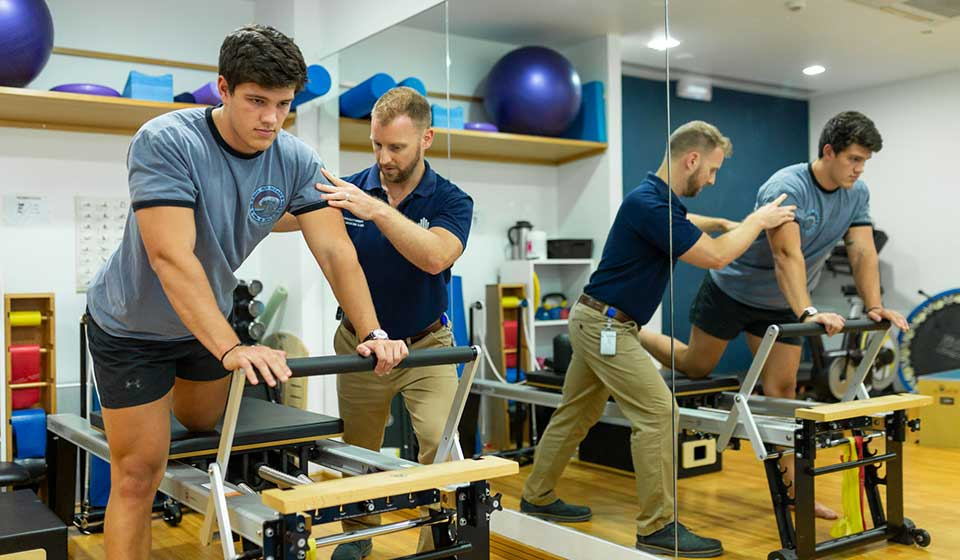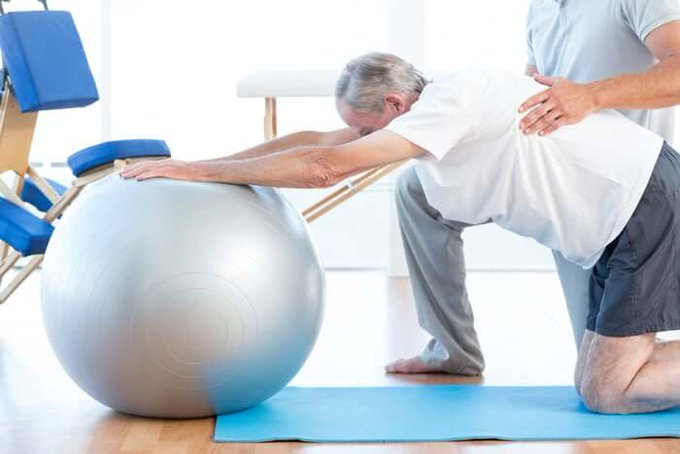Text & media
Physiotherapy Versus Arthritis
Physiotherapy Gregory Hills, which uses movement and hands-on methods to improve your health, is also known as manual therapy. This can include a variety of manual therapies, such as massage, joint mobilization and manipulation, or acupuncture.
Physiotherapists may also recommend exercise to maintain range of motion, reduce stiffness, inflammation, and pain. They may also recommend home modifications or assistive devices, like orthotics.
User Experiences
Arthritis can affect any part or the body. It may also affect your spine and hips. It is a chronic condition that can be difficult to manage, but it is possible to live a full and active life with arthritis.
One of the most common signs of arthritis is pain. It can be very mild or very severe and is often caused by a break in the cartilage that covers the ends of the bones at the joints. This can cause rubbing of the bones, which can lead to pain and joint swelling.
A physiotherapist can provide a range of treatments to relieve your pain and improve your mobility. These include manual therapy techniques such as massage, hot and low applications, and specialized equipment.
Physical therapists use these techniques to help their patients with arthritis pain, and they can also prescribe exercise programs to improve strength, flexibility and dexterity in the affected area. This can help to reduce pain, stiffness and fatigue, and it may be the only treatment that will actually get you moving again.
Another benefit of physiotherapy is that it helps patients deal with their condition. Many people with arthritis have depression and feelings of stress, which can contribute to the symptoms of the disease. The right physiotherapy strategies such as cognitive-behavioral therapy (CBT) can help patients deal effectively with these feelings and reduce the severity of their symptoms.
Participants accessed physiotherapy through a range of care models, including consultations at private physiotherapy practices, participation in programmes specifically developed for OA management delivered in public hospital settings (eg, Osteoarthritis Chronic Care Programme28), and private (Good Life with Osteoarthritis Denmark29). They were often referred to physiotherapy usually by their doctors or other medical professionals.
FAQs
Ndis physiotherapy is a cost-effective and natural treatment that helps patients manage pain. It also reduces the dependency on pain medications and carries no harmful side effects.
Your physiotherapist will tailor a plan to suit your needs based on your individual circumstances. This could include a variety of physical therapies, such as massage, acupuncture or joint mobilization.
Your physio will be able to help you manage your arthritis pain, increase your mobility and improve your quality of life. They'll also provide education and support to keep you healthy and moving well.
A physiotherapist can help you make lifestyle changes to reduce pain and maintain a healthy weight. They'll be able to show you how to modify your daily activities and recommend assistive devices that will make your life easier.
It is important to eat a healthy diet rich in antioxidants and antiinflammatory foods. Refined and processed foods should be avoided and fresh fruits, vegetables, legumes and nuts should be a priority.
It is also important to improve your sleep hygiene. Getting a good night's sleep can greatly improve your quality of life and reduce your arthritis pain and fatigue.
Ice packs can be used to soothe swollen joints, or heat therapy to relax sore muscles. Some physiotherapists may recommend laser or ultrasound treatments to reduce inflammation and pain.
Regardless of the type of arthritis you have, it is possible to improve your quality of life through physiotherapy. During your first appointment, your physiotherapist will take a thorough history of your symptoms and pain levels. Your fitness level and overall health will be assessed to create a customized plan for you.
What can physiotherapy do?
Physiotherapy can help people with arthritis manage their pain, improve their range of movement, and reduce swelling. It also teaches them ways to prevent further problems by increasing their mobility, strength and general health.
The physiotherapist will ask about your current activity level and any other issues. They will then examine your joints to assess their strength and range of motion, which will help them tailor a treatment plan that suits your needs.
They may recommend a gradual progression in intensity, duration, and complexity of exercises. This is particularly important for people with arthritis, who often have lower levels of fitness due to pain, stiffness or biomechanical abnormalities.
Another key aspect of physiotherapy is that it takes a whole person approach to wellbeing and treatment, meaning that it looks at your overall health, including general lifestyle activities such as walking. This is known as a holistic approach and is particularly helpful for those with arthritis who want to stay active and independent.
Besides exercises, physiotherapists can also use manual therapy techniques, which can include massage and joint manipulation. This helps to stretch the muscles around the joint, improve blood flow and reduce inflammation.
Patients can also be helped by physical therapists to learn about the health benefits of a healthy diet. Regular aerobic exercise such as running, swimming, pilates and swimming can improve muscle endurance and reduce stress on the joints.
Other physiotherapy treatments that can be beneficial for people with arthritis include hot and cold therapy, wax bath therapy, acupuncture, and hydrotherapy. Hydrotherapy is great for improving joint mobility, as it uses the buoyancy of a pool to take some of the weight off painful joints.
Exercise programs that are graded
There are many different exercise therapies available, but a programme that is designed by a specialist physiotherapist, with a carefully graded progression of exercises, is the most effective way to get the best results. This will include a mix of aerobic and strengthening exercises, and stretches and flexibility exercises.
Physiotherapy treatments and exercise programmes are a key part of treating arthritis, particularly for people who have had joint replacement surgery (Ottawa et al 2005). Patients with osteoarthritis or rheumatoid have reported that therapeutic exercise programs reduce stiffness, pain, fatigue, and improve their physical function.
These treatments can also be helpful for stroke victims, as they can improve blood flow. This can help to reduce inflammation and swelling that can occur with this condition.
Aquatic exercise is also an excellent option for patients with rheumatoid arthritis as it helps to decrease pressure on joints and improves the range of movement. However, you should speak to your therapist about this as it may be a better idea to start on land-based exercises first and progress to aquatic exercise when you can.
Your physiotherapist can help you identify flare-ups or periods of weakness and create a personalized program that can be modified to suit your needs. They will also be able to ensure you are doing the exercises correctly and safely so that you do not get too tired or injure yourself.
Graded exercise programmes are an important component of physiotherapy treatment for people with arthritis. The aim is to steer away from the 'exercise too much, get too tired, do nothing' cycle and encourage you to find what you can do comfortably, gradually increase this over time and build on it. This will prevent relapses, keep you active and healthy for as long as you can.
Pain relief treatments
Physiotherapy can be used as a pain relief treatment for both osteoarthritis (OA) and rheumatoid arthritis (RA). It stimulates the body's natural healing process to improve function, reduce pain and increase flexibility. Although its effectiveness will depend on the individual and the condition, it can help you feel better.
Physiotherapists can help you manage your arthritis pain by creating a customized treatment plan with you. They may recommend a range of methods, including exercise, weight loss, and dietary changes.
Pain medication is another common treatment for arthritis. It comes in the form of pills and creams that you apply to your skin. They contain drugs called nonsteroidal anti-inflammatory drugs (NSAIDs), which work by blocking the production of prostaglandins, the chemical that causes inflammation and pain. These include naproxen, ibuprofen, and aspirin.
A variety of over-the-counter (OTC) topical NSAIDs are available, such as diclofenac gel, Voltaren emulgel, and others. Your doctor may prescribe them, but you must use them in low doses and monitor closely to avoid side effects.
Stem cell injections are another treatment option, which doctors use to stimulate tissue regeneration in joints. They extract stem cells from the bone marrow or fat tissue, and inject them into painful joints to relieve pain.
To ensure that patients receive safe and effective treatments, pain guidelines must consider all the possible mechanisms of arthritis pain. This is particularly important for RA and OA where the inflammatory process can be complex and multifaceted. Non-nociceptive, neuropathic mechanisms also play an important part. Until better evidence and guidelines are available, clinicians need to continue to balance efficacy with safety aspects in treating arthritis-related pain.
FAQs on Physiotherapy for Managing Arthritis Pain and Improving Mobility
Q: What is physiotherapy?
A: Physiotherapy, also known as physical therapy, uses movement and manual techniques to improve a person's health. It can include massage, joint mobilization, manipulation, acupuncture, and exercise programs to improve strength, flexibility, and mobility.
Q: How does physiotherapy help with arthritis?
A: Physiotherapy helps relieve arthritis pain and improve mobility by providing manual therapy techniques, exercise programs, and lifestyle changes. It helps reduce inflammation, stiffness, and fatigue, and improves overall health and well-being.
Q: What are the benefits of physiotherapy for arthritis?
A: The benefits of physiotherapy for arthritis include reducing pain, improving mobility and range of movement, reducing swelling, increasing strength, and improving overall health and well-being. It also helps patients deal with the emotional impact of their condition and reduces the dependency on pain medications.
Q: What does a physiotherapy session for arthritis entail?
A: During a physiotherapy session for arthritis, the physiotherapist will take a thorough history of the patient's symptoms and pain levels. They will assess the strength and range of motion of the joints, and create a customized treatment plan based on the patient's needs. The treatment may include manual therapy techniques, exercise programs, and lifestyle changes.
Q: What types of manual therapy can a physiotherapist use for arthritis?
A: A physiotherapist can use manual therapy techniques such as massage, joint mobilization, and manipulation to relieve pain, improve mobility, and reduce inflammation. They may also use hot and cold therapy, wax bath therapy, acupuncture, and hydrotherapy.
Q: Can physiotherapy help reduce the dependency on pain medications?
A: Yes, physiotherapy can help reduce the dependency on pain medications. It provides natural and cost-effective treatment for managing arthritis pain and improving overall health and well-being.
Q: What other types of therapy can be used in conjunction with physiotherapy for arthritis?
A: Other types of therapy that can be used in conjunction with physiotherapy for arthritis include cognitive-behavioral therapy (CBT), hot and cold therapy, wax bath therapy, acupuncture, and hydrotherapy.
Q: Can physiotherapy improve the quality of life for people with arthritis?
A: Yes, physiotherapy can greatly improve the quality of life for people with arthritis by reducing pain, improving mobility and range of movement, and reducing swelling and fatigue. It also provides education and support to keep the patient healthy and active.


